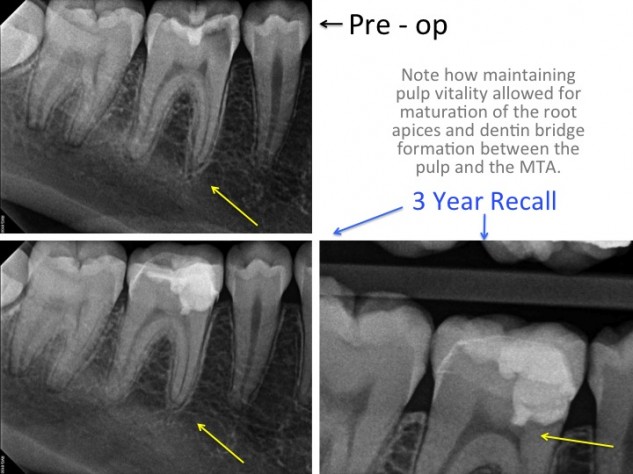Services Offered
Conservative Endodontic Diagnosis
Diagnosis of Vertical Root Fractures
Vital Pulp Therapy
Root Canal Therapy
Root Canal Retreatment
Periradicular Surgery
Perforation Repair
Treatment of Resorption
Core Restoration / Buildups and Post Cementation
Porcelain Repair/Esthetic Restoration of Endodontically Accessed Crowns
Internal Bleaching
Traumatic Injuries
Dental Emergencies
Pediatric Endodontics
Conservative Endodontic Diagnosis
Dr. Boehne prides himself on spending the time with each patient to arrive at a conservative, biologically based diagnosis. Every effort is made to offer the least invasive solution that will correct the patient’s problem, and compliment the referring dentist’s comprehensive treatment plan.
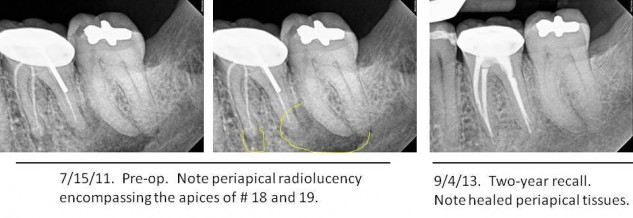
This patient was referred for potential RCT #18 and RETX #19 due to the large lesion encompassing both teeth. Care was taken to arrive at the correct diagnosis, and only RETX #19 was necessary. Two year recall shows complete healing of the lesion around both teeth.
Top
Diagnosis of Vertical Root Fractures
Patients are often referred to Dr. Boehne for a definitive diagnosis concerning a vertical root fracture. There are specific circumstantial clinical and radiographic signs and symptoms that render a tooth “suspicious” for having a vertical root fracture. Since the only treatment for a VRF is extraction of the tooth, it is imperative to arrive at the correct diagnosis. The only way to definitively diagnose a vertical root fracture is to take the time to see it directly, either by accessing the root canal to see it from the inside, or by elevating a small surgical flap to see it from the outside.
Vital Pulp Therapy
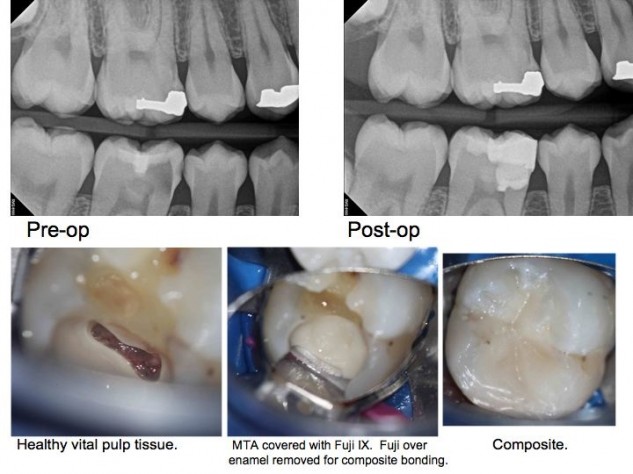
One of Dr. Boehne’s greatest passions in endodontics is pulp biology. The pulp is an amazing tissue that has an innate capacity to repair itself after injury, provided it is free of infection and the inflammation is reversible. A significant part of Dr. Boehne’s practice has become diagnosing and treating (reversing) pulpitis. This includes resolving post operative sensitivity following composite restoration placement, pulp caps, partial and full pulpotomies. These procedures can even be successfully accomplished with carious pulp exposures. The biology has been understood for a long time, but clinical procedures with long term success rates as high as root canal therapy hadn’t been described until recently. Fortunately materials and procedures for predictable vital pulp therapy are now available, and supported with long term clinical results. The benefits of these minimally invasive procedures include sparing precious root and pericervical dentin, thus decreasing the chances of future fractures. When pulp vitality is maintained, immature roots will continue to thicken their dentinal walls and strengthen over time. Patients also save money.
Root Canal Therapy
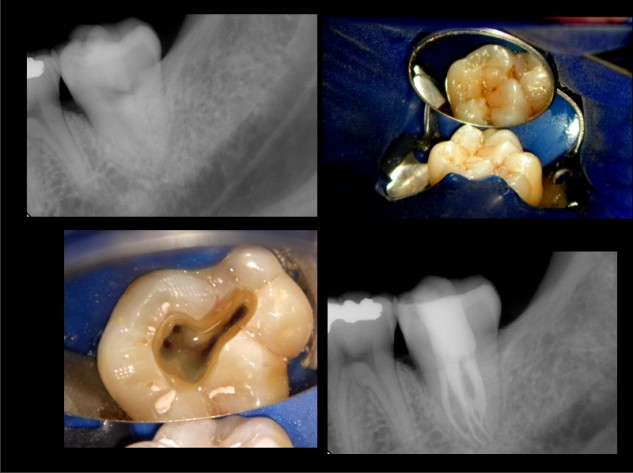
When a tooth has become necrotic of irreversibly inflamed resulting from trauma or bacterial infection secondary to a large cavity, leaking restoration, or fracture, the tooth can be saved with root canal therapy. The procedure involves making a small access into the root canal space, removing the remaining inflamed tissue, disinfecting the system, and sealing it to prevent future leakage. This procedure resolves toothaches, while allowing patient’s to keep their natural teeth, and promotes healing of the tissues around the tooth.
Root Canal Retreatment
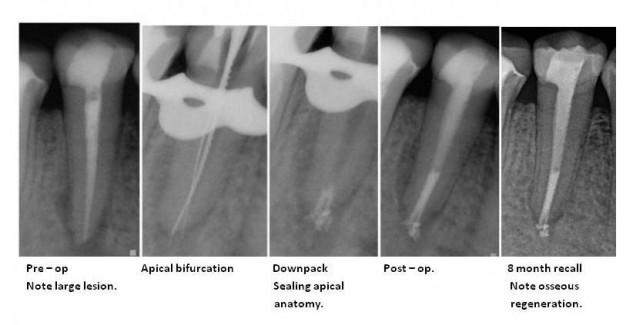
With proper technique and effort, initial root canal therapy can have a success rate upward of 97%. Dispite this, a large portion of our endodontic specialty practice involves treating teeth that have had root canal therapy in the past. Retreatment may be necessary if anatomy was left untreated, bacteria was left behind, or new bacteria has contaminated the tooth due to coronal leakage. Endodontic retreatment involves removing the previous root filling material, addressing any untreated anatomy, disinfecting the root canal system and sealing it against future leakage. Due to advancements in technology, materials, and procedural techniques, previously impossible or difficult cases can now be performed predictably.
Periradicular Surgery
In most cases, root canal therapy can successfully save a tooth without the need of periradicular surgery. In some cases, where the anatomy or the restorative is too complex to treat orthograde, or when there is an extraradicular biofilm or cyst, then apicoectomy and retrofill procedures can be used to save the tooth.
Perforation Repair
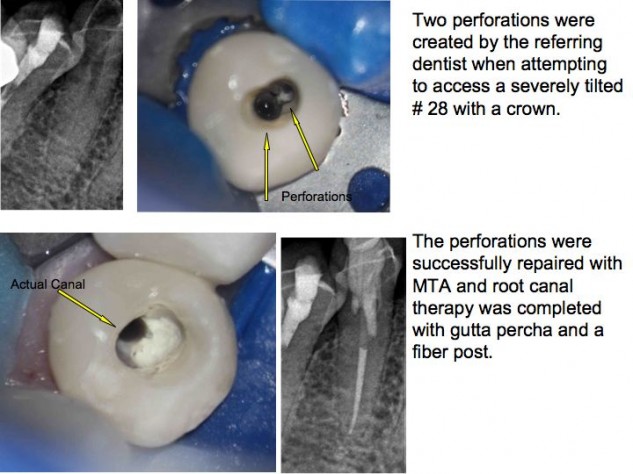
With today’s materials and techniques, many teeth that would have required extraction due to iatrogenic perforations can be saved. EndoVac negative pressure irrigation was used to safely clean out the perforations and mineral trioxide aggregate was used to seal them.
Treatment of Resorption
We are experts at treating cases with External Invasive Cervical Resorpton, Inflammatory Resorption and Replacement Resorption.
Core Restoration / Buildups and Post Cementation
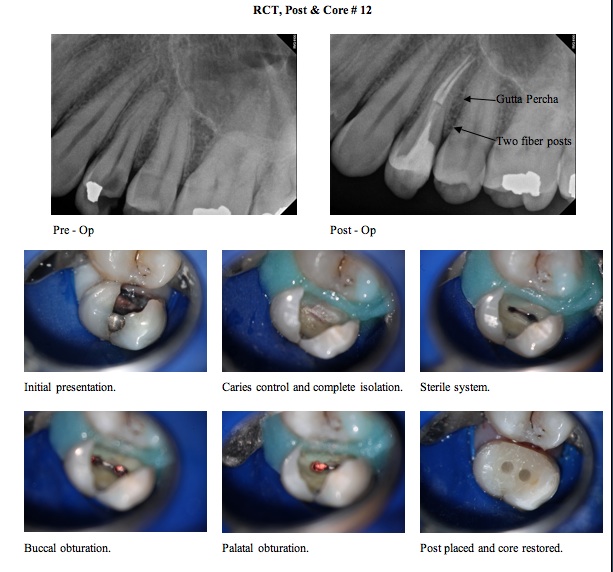
Along with pulp biology, the endo-restorative continuum is Dr. Boehne’s other major passion in endodontics, and his area of research. We routinely place the core restorations and place posts when necessary.
Porcelain Repair/Esthetic Restoration of Endodontically Accessed Crowns

Crowns are generally used to restore teeth that have a fracture, a big cavity, or a large existing filling that requires replacing. Because of this, teeth that have crowns often require endodontic therapy.
Esthetic access repairs make accessing through crowns (even brand new crowns) a complete non-issue. When done correctly, the bond achievable to porcelain is stronger than the bond achievable to dentin, eliminating the risk of root canal failure from coronal leakage. Patients always appreciate that their crown looks as good as it did before we started.
Esthetic restorations also allow for more conservative access cavities (cingulum preserving access designs) on anterior teeth, which significantly increase the prognosis of these teeth.
Internal Bleaching

Necrotic teeth often discolor from debris and breakdown products, including bilirubin, leaching into dentinal tubules from the inside. These teeth are resistant to external bleaching, but respond extremely well to internal bleaching. This is a completely non-invasive procedure since no additional tooth structure removal is required to achieve an esthetic result.
Traumatic Injuries
Traumatic accidents often involve the teeth. From infarctions to uncomplicated and complicated coronal fractures, to root fractures, to luxations and complete avulsions, we are often called in by the general dentist to be a part of the dental team to treat traumatic injuries.
Top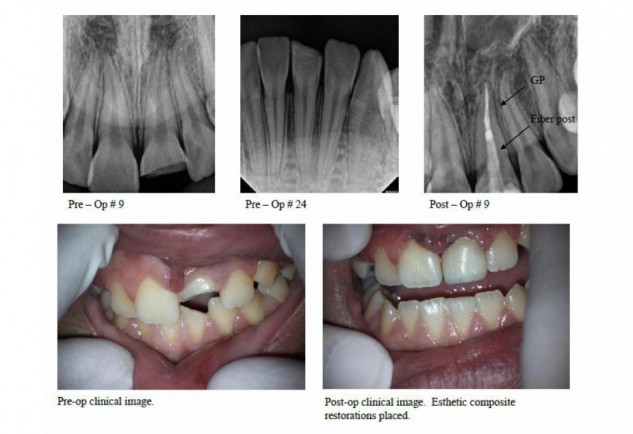
Dental Emergencies
We understand that an acute pulpitis or periapical abscess can be debilitating and we always make time to accomadate emergencies.
Pediatric Endodontics
We are happy to see kids for all endodontics services.
